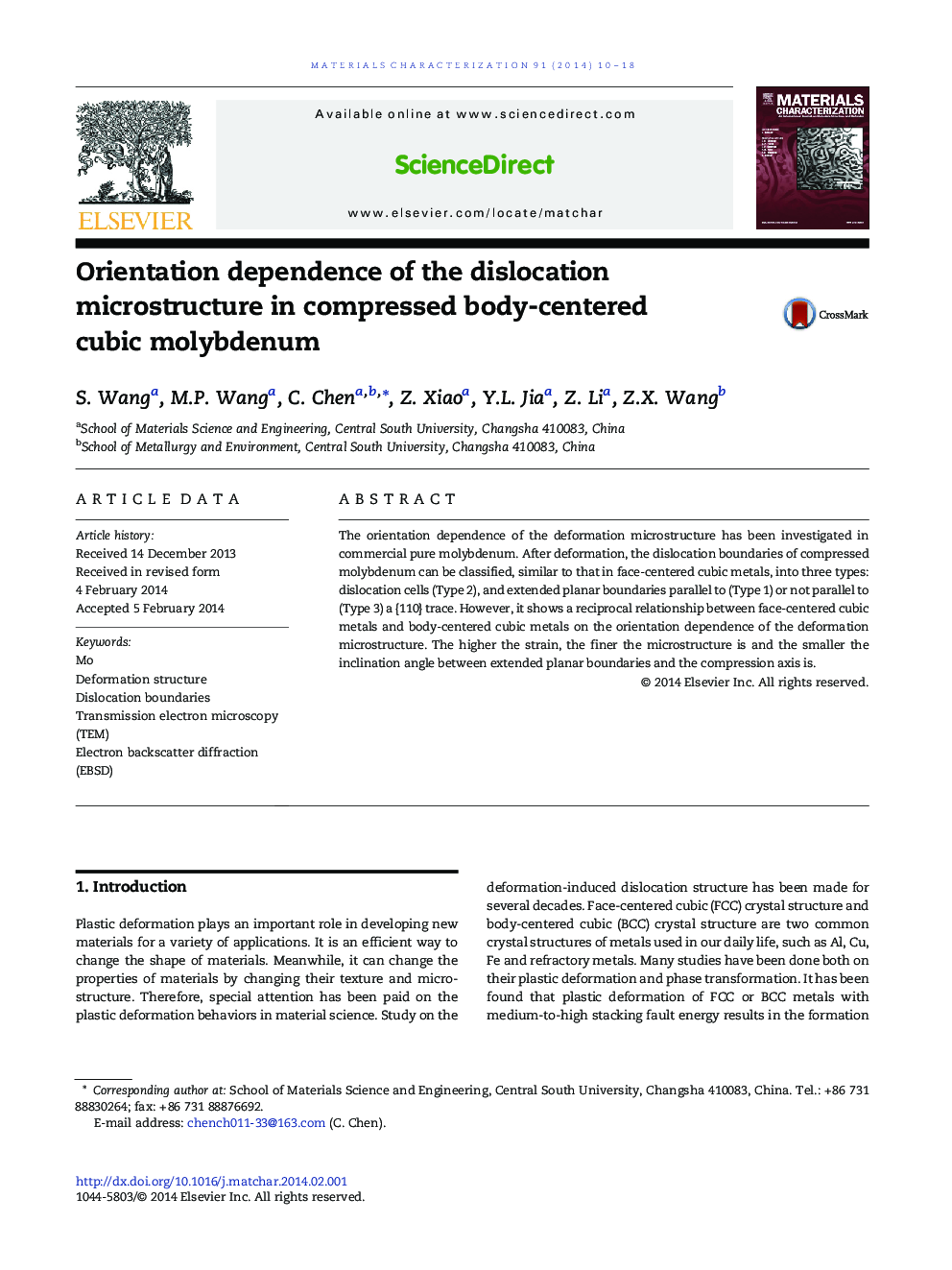| Article ID | Journal | Published Year | Pages | File Type |
|---|---|---|---|---|
| 7970829 | Materials Characterization | 2014 | 9 Pages |
Abstract
The orientation dependence of the deformation microstructure has been investigated in commercial pure molybdenum. After deformation, the dislocation boundaries of compressed molybdenum can be classified, similar to that in face-centered cubic metals, into three types: dislocation cells (Type 2), and extended planar boundaries parallel to (Type 1) or not parallel to (Type 3) a {110} trace. However, it shows a reciprocal relationship between face-centered cubic metals and body-centered cubic metals on the orientation dependence of the deformation microstructure. The higher the strain, the finer the microstructure is and the smaller the inclination angle between extended planar boundaries and the compression axis is.
Keywords
Related Topics
Physical Sciences and Engineering
Materials Science
Materials Science (General)
Authors
S. Wang, M.P. Wang, C. Chen, Z. Xiao, Y.L. Jia, Z. Li, Z.X. Wang,
